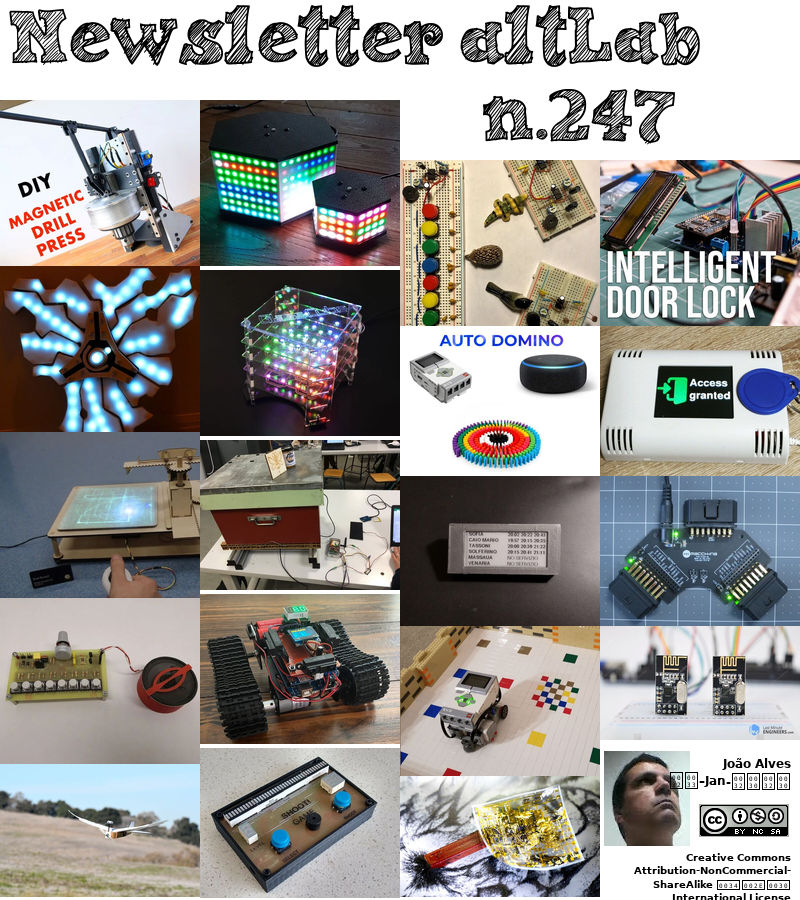2020-01-23 - Nº 247
Editorial
Esta é a Newsletter Nº 247 que se apresenta com o mesmo formato que as anteriores. Se gostar da Newsletter partilhe-a!
Todas as Newsletters encontram-se indexadas no link.
Esta Newsletter tem os seguintes tópicos:
Faz hoje anos que nascia, em 1840, o físico alemão Ernst Abbe responsável por estabelecer uma base técnica e teórica para o desenho de instrumentos ópticos. A condição "Abbe sine" permitiu projectar lentes sem a distorção de aberração esférica da imagem. Ele inventou o sistema de lentes apocromáticas (1868) e adicionou a lente do condensador Abbe para melhorar a iluminação do microscópio (1870). Ele usou imersão homogénea de amostra e objetiva de microscópio em óleo de cedro com índice de refracção correspondente para obter maior ampliação. Ele inventou o refratómetro Abbe para medir um índice de refracção. A partir de 1866, ele colaborou com Carl Zeiss para produzir instrumentos ópticos de alta qualidade. Ele tornou-se o único proprietário dos trabalhos ópticos da Zeiss em 1888. A Partir de 1878, ele também foi director dos observatórios astronómicos e meteorológicos da Universidade de Jena. Faz também anos hoje que nascia, em 1862, o matemático David Hilbert que reduziu a geometria a uma série de axiomas e contribuiu substancialmente para o estabelecimento dos fundamentos formalistas da matemática. No seu livro, Foundations of Geometry, ele apresentou o primeiro conjunto completo de axiomas desde Euclides. O seu trabalho em 1909 sobre equações integrais levou à pesquisa do século XX em análise funcional (na qual as funções são estudadas em grupos). Hoje, o nome de Hilbert é muitas vezes lembrado pelo conceito de espaço de Hilbert na física quântica, um espaço de dimensões infinitas.
Nesta semana que passou ficámos a saber que o Rover Curiosity sofreu um problema que lhe provocou um congelamento temporário. Ao ter perdido o seu "sentido" de orientação o Rover Curiosity por questões de segurança parou no local onde se encontrava até que possa novamente "saber" onde se encontra. Tendo mantido-se continuamente em contacto com a missão que o acompanha na Terra os engenheiros da equipa conceberam um plano para recuperar o Rover deste problema e para perceber o que o levou a esta situação. O plano foi aplicado com sucesso e o Rover voltou a estar totalmente operacional para continuar a explorar Marte fazendo as suas experiências cientificas.
Na Newsletter desta semana apresentamos diversos projetos de maker. É apresentada a revista Hackspace Magazine Nº27 de Fevereiro e o livro "Think Python".
 João Alves ([email protected])
João Alves ([email protected])
O conteúdo da Newsletter encontra-se sob a licença  Creative Commons Attribution-NonCommercial-ShareAlike 4.0 International License.
Creative Commons Attribution-NonCommercial-ShareAlike 4.0 International License.
Novidades da Semana

Sols 2649-2652: Curiosity Loses Its Attitude
"Knowing where our bodies are helps us move through the world. We know if we are standing or sitting, if our arms are out or by our sides (or for some people, not there at all). This body awareness is essential for staying safe. Rovers also need to know where their bodies are relative to their surroundings. Curiosity stores its body attitude in memory, things like the orientation of each joint, which instrument on the end of its arm is pointing down, and how close APXS is to the ground. It also stores its knowledge of the environment, things like how steep the slope is, where the big rocks are, and where the bedrock sticks out in a dangerous way." [...]
Outras Notícias

NASA, SpaceX Complete Final Major Flight Test of Crew Spacecraft
"NASA and SpaceX completed a launch escape demonstration of the company’s Crew Dragon spacecraft and Falcon 9 rocket Sunday. This was the final major flight test of the spacecraft before it begins carrying astronauts to the International Space Station under NASA’s Commercial Crew Program. The launch escape test began at 10:30 a.m. EST with liftoff from historic Launch Complex 39A at NASA’s Kennedy Space Center in Florida on a mission to show the spacecraft’s capability to safely separate from the rocket in the unlikely event of an inflight emergency. “This critical flight test puts us on the cusp of returning the capability to launch astronauts in American spacecraft on American rockets from American soil,” said NASA Administrator Jim Bridenstine. “We are thrilled with the progress NASA’s Commercial Crew Program is making and look forward to the next milestone for Crew Dragon.” As part of the test, SpaceX configured Crew Dragon to trigger a launch escape about 1.5 minutes after liftoff. All major functions were executed, including separation, engine firings, parachute deployment and landing." [...]

Next-Generation Miniaturized Rubidium Atomic Clock Improves Performance and adds Features without Increasing Size
"Microchip releases MAC-SA5X, enhancing its Miniature Atomic Clock (MAC) technology to deliver wider temperature range and rapid warm-up time As reliance on precise frequency and timing increases due to the Global Navigation Satellite System (GNSS) enabling 5G communication networks, data centers and other mission critical infrastructure, smaller size and high-performance atomic clock technology has become essential to support both military and commercial applications. To meet demand for a small footprint atomic clock, Microchip Technology Inc. (Nasdaq: MCHP) today announced the industry’s highest performance atomic clock for its size and power. The new device also delivers a wider thermal range, critical performance improvements and other enhancements over previously available technology. Microchip’s next-generation MAC-SA5X miniaturized rubidium atomic clock produces a stable time and frequency reference that maintains a high degree of synchronization to a reference clock, such as a GNSS-derived signal. Its combination of low monthly drift rate, short-term stability and stability during temperature changes allow the device to maintain precise frequency and timing requirements during extended periods of holdover during GNSS outages or for applications where large rack-mount clocks are not possible. Operating over a wider temperature range of -40 to +75 Celsius, the MAC-SA5X was designed to quickly achieve atomic stability performance by taking less time to lock compared to some of the existing clock technology available in the market." [...]
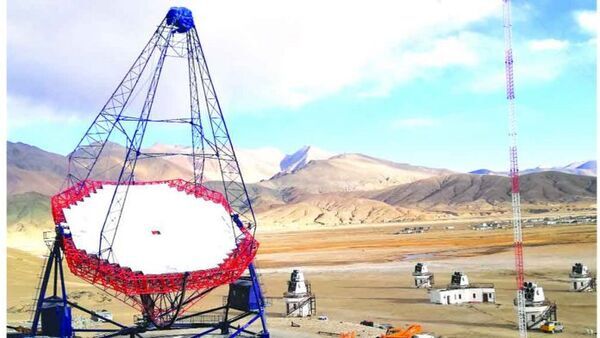
World’s highest and India’s largest gamma-ray telescope to go live in Ladakh this year
"Placed at 4,300 m above sea level in Hanle, Ladakh, MACE is also the world's second largest gamma-ray telescope, with a 21-m-diameter dish. India’s largest and the world’s highest gamma-ray telescope is set to go live later this year, aiming to provide a new window into distant stars and galaxies in the universe. The Major Atmospheric Cherenkov Experiment Telescope (MACE) in Hanle, Ladakh, is placed at an altitude of 4,300 metres above sea level. It is the world’s second-largest, ground-based gamma-ray telescope with a 21-metre-diameter dish. The largest telescope of the same class is the 28-metre-diameter telescope, which is part of the High Energy Stereoscopic System (HESS) in Namibia. “The installation of the telescope is complete and trial runs are being carried out." [...]

Toshiba Touts Algorithm That’s Faster Than a Supercomputer
"It’s a tantalizing prospect for traders whose success often hinges on microseconds: a desktop PC algorithm that crunches market data faster than today’s most advanced supercomputers. Japan’s Toshiba Corp. says it has the technology to make such rapid-fire calculations a reality -- not quite quantum computing, but perhaps the next best thing. The claim is being met with a mix of intrigue and skepticism at financial firms in Tokyo and around the world. Toshiba’s “Simulated Bifurcation Algorithm” is designed to harness the principles behind quantum computers without requiring the use of such machines, which currently have limited applications and can cost millions of dollars to build and keep near absolute zero temperature. Toshiba says its technology, which may also have uses outside finance, runs on PCs made from off-the-shelf components. “You can just plug it into a server and run it at room temperature,” Kosuke Tatsumura, a senior research scientist at Toshiba’s Computer & Network Systems Laboratory, said in an interview." [...]

DirecTV fears explosion risk from satellite with damaged battery
"DirecTV is racing to move its Spaceway-1 satellite out of the geostationary arc after the 15-year-old satellite suffered a crippling battery malfunction that the company fears could cause it to explode. DirecTV told the U.S. Federal Communications Commission that it does not have time to deplete the remaining fuel on Spaceway-1 before disposing of it by boosting it 300 kilometers above the geostationary arc, a region home to most of the world’s large communications satellites. Spaceway-1 is a Boeing-built High Power 702 model satellite that was designed to last 12 years. Launched in 2005 on a Sea Launch Zenit 3SL rocket, the 6,080-kilogram satellite originally provided high-definition television direct broadcasting services from its orbital slot at 102.8 degrees west longitude. More recently, Spaceway-1 was being used to backup Ka-band capacity over Alaska. In December, an unexplained anomaly caused “significant and irreversible thermal damage” to Spaceway-1’s batteries, DirecTV said in a filing dated Jan. 19." [...]

Lexus Creates Moon Mobility Concept Sketch For Lunar Design Portfolio
"Joining an elite group of design industry luminaries, the luxury automaker was selected to contribute a suite of design concept drawings to Document Journal’s prestigious portfolio For Document Journal‘s issue No. 15, the art & fashion magazine invited a selection of the culture’s most compelling architects and designers to find their inner Major Toms and imagine human life on the moon for The Lunar Design Portfolio. How shall we live? What will it look like? What will we wear? What will we drive?" [...]

First Spacebus Neo satellite launched
"Ariane 5’s first launch of 2020 has delivered two telecom satellites, Konnect and GSAT-30, into their planned transfer orbits. Arianespace announced liftoff at 21:05 GMT (22:05 CET, 18:05 local time) this evening from Europe’s Spaceport in Kourou, French Guiana. Konnect, with a launch mass of 3619 kg, was the first to be released after about 27 minutes. Konnect will provide broadband services for Europe and Africa and has a design life of 15 years. It was built by Thales Alenia Space for Eutelsat, its commercial operator, and is the first satellite from the new Spacebus Neo product line developed under an ESA Partnership Project managed jointly by ESA and the French Space Agency, CNES. ESA Partnership Projects such as Neosat federate European industry around large-scale programmes, developing innovative cutting-edge solutions in partnership with private or public partners." [...]
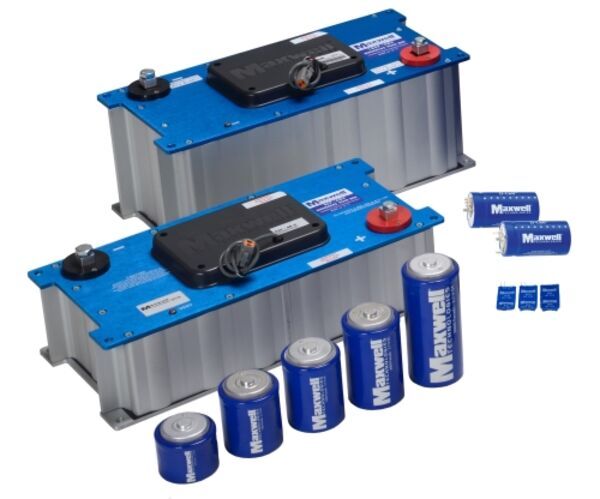
Tesla Completes Acquisition of Maxwell Technologies
"Tesla, Inc. (NASDAQ: TSLA) today announced the successful completion of its previously announced offer to exchange all outstanding shares of common stock of Maxwell Technologies, Inc. (“Maxwell”) for 0.0193 of a share of Tesla common stock, together with cash in lieu of any fractional shares of Tesla common stock, without interest and less any applicable withholding taxes. The exchange offer expired at 11:59 p.m., Eastern Time, on Wednesday, May 15, 2019. As of the expiration of the exchange offer, a total of approximately 36,764,342 shares of common stock of Maxwell were validly tendered in the exchange offer and not validly withdrawn, representing approximately 79% of the aggregate voting power of the shares of Maxwell common stock outstanding immediately after the consummation of the exchange offer. All shares of Maxwell common stock that were validly tendered and not validly withdrawn prior to the expiration of the offer have been accepted by Tesla for payment in accordance with the terms of the exchange offer. Following to the completion of the exchange offer, Tesla completed the acquisition of Maxwell by consummating the second step merger contemplated by the previously announced merger agreement between Tesla and Maxwell. As a result of this merger, all shares of Maxwell stock that were not tendered in Tesla’s exchange offer were cancelled in exchange for the right to receive the same consideration paid for Maxwell stock in the exchange offer." [...]

Reformer: The Efficient Transformer
"Understanding sequential data — such as language, music or videos — is a challenging task, especially when there is dependence on extensive surrounding context. For example, if a person or an object disappears from view in a video only to re-appear much later, many models will forget how it looked. In the language domain, long short-term memory (LSTM) neural networks cover enough context to translate sentence-by-sentence. In this case, the context window (i.e., the span of data taken into consideration in the translation) covers from dozens to about a hundred words. The more recent Transformer model not only improved performance in sentence-by-sentence translation, but could be used to generate entire Wikipedia articles through multi-document summarization. This is possible because the context window used by Transformer extends to thousands of words." [...]
Ciência e Tecnologia
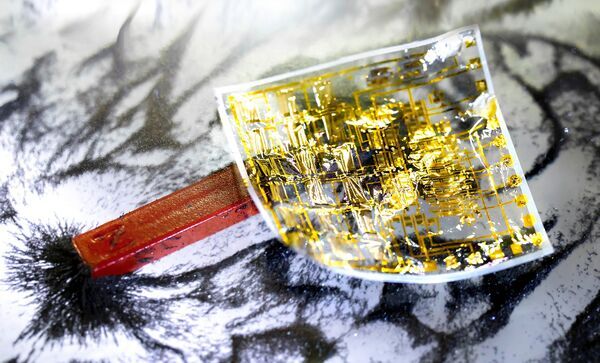
Integrate Micro Chips for electronic Skin
"First fully integrated flexible electronics made of magnetic sensors and organic circuits opens the path towards the development of electronic skin. Human skin is a fascinating and multifunctional organ with unique properties originating from its flexible and compliant nature. It allows for interfacing with external physical environment through numerous receptors interconnected with the nervous system. Scientists have been trying to transfer these features to artificial skin for a long time, aiming at robotic applications. Operation of robotic systems heavily rely on electronic and magnetic field sensing functionalities required for positioning and orientation in space. A lot of research and development have been devoted into implementation of these functionalities in a flexible and compliant form." [...]

Using artificial intelligence to enrich digital maps
"Model tags road features based on satellite images, to improve GPS navigation in places with limited map data. A model invented by researchers at MIT and Qatar Computing Research Institute (QCRI) that uses satellite imagery to tag road features in digital maps could help improve GPS navigation. Showing drivers more details about their routes can often help them navigate in unfamiliar locations. Lane counts, for instance, can enable a GPS system to warn drivers of diverging or merging lanes. Incorporating information about parking spots can help drivers plan ahead, while mapping bicycle lanes can help cyclists negotiate busy city streets. Providing updated information on road conditions can also improve planning for disaster relief." [...]

Quantum experiments explore power of light for communications, computing
"A team from the Department of Energy’s Oak Ridge National Laboratory has conducted a series of experiments to gain a better understanding of quantum mechanics and pursue advances in quantum networking and quantum computing, which could lead to practical applications in cybersecurity and other areas. ORNL quantum researchers Joseph Lukens, Pavel Lougovski, Brian Williams, and Nicholas Peters—along with collaborators from Purdue University and the Technological University of Pereira in Colombia—summarized results from several of their recent academic papers in a special issue of the Optical Society’s Optics & Photonics News, which showcased some of the most significant results from optics-related research in 2019. Their entry was one of 30 selected for publication from a pool of 91. Conventional computer “bits” have a value of either 0 or 1, but quantum bits, called “qubits,” can exist in a superposition of quantum states labeled 0 and 1. This ability makes quantum systems promising for transmitting, processing, storing, and encrypting vast amounts of information at unprecedented speeds. To study photons—single particles of light that can act as qubits—the researchers employed light sources called quantum optical frequency combs that contain many precisely defined wavelengths." [...]

Researchers expand microchip capability with new 3D inductor technology
"Smaller is better when it comes to microchips, researchers said, and by using 3D components on a standardized 2D microchip manufacturing platform, developers can use up to 100 times less chip space. A team of engineers has boosted the performance of its previously developed 3D inductor technology by adding as much as three orders of magnitudes more induction to meet the performance demands of modern electronic devices. In a study led by Xiuling Li, an electrical and computer engineering professor at the University of Illinois and interim director of the Holonyak Micro and Nanotechnology Laboratory, engineers introduce a microchip inductor capable of tens of millitesla-level magnetic induction. Using fully integrated, self-rolling magnetic nanoparticle-filled tubes, the technology ensures a condensed magnetic field distribution and energy storage in 3D space – all while keeping the tiny footprint needed to fit on a chip. The findings of the study are published in the journal Science Advances. Traditional microchip inductors are relatively large 2D spirals of wire, with each turn of the wire producing stronger inductance." [...]

Geoneutrinos confirm that we rest on a mantle filled with uranium and thorium
"Protected by the Gran Sasso massif from radiation coming from space, and thus immersed in what is called cosmic silence, Borexino is the purest experiment in the world for the measurement of neutrinos, not only those coming from the Sun but also those coming from bowels of the Earth, the so-called geoneutrinos. After more than ten years of acquisition and a sophisticated data analysis, the international collaboration that leads the experiment of the INFN Gran Sasso National Laboratories has published the new results on geoneutrinos in the journal Physical Review D. The article has been selected as Editors' Suggestion, among the papers considered of major importance and scientific interest. "For the first time the signal of neutrinos produced by the radioactive decay processes of uranium and thorium distributed in the Earth's mantle has been clearly observed, allowing to exclude the absence of radioactivity in the depths of the Earth with 99% probability", explains Gioacchino Ranucci, researcher of the INFN Section of Milan and co-manager of the scientific collaboration Borexino. The published result shows that much of the heat given off by the bowels of the Earth derives from the radioactive decay of uranium-238 and thorium-232 present in the Earth's mantle, almost 3,000 km thick, on which rests the thin crust we walk over. In fact, Borexino researchers estimated with a high probability (about 85%) that radioactive decays in rocks produce more than half of the earth's heat, with a predominant role of the mantle compared to the crust. This evidence opens up new scenarios in the global geochemical exploration of our planet." [...]

Quantum computing: Opening new realms of possibilities
"Hidden beneath our everyday world — on the infinitesimal scale of atomic and subatomic particles — is a strange and elusive realm. It is a Lewis Carroll-like place where ghostly particles pop in and out of existence, swirling electrons occupy two positions at once, and objects possess dual natures — they can be both waves and particles simultaneously. Despite the seeming irrationality of these concepts, scientists over the last 120 years have demonstrated that this realm — known as quantum mechanics — is the foundation on which our physical existence is built. It is one of the most successful theories in modern science. Without it, we would not have such marvels as atomic clocks, computers, lasers, LEDs, global positioning systems and magnetic resonance imaging, among many other innovations. It is in the domain of information technology, however, that we might end up owing quantum mechanics our greatest debt." [...]
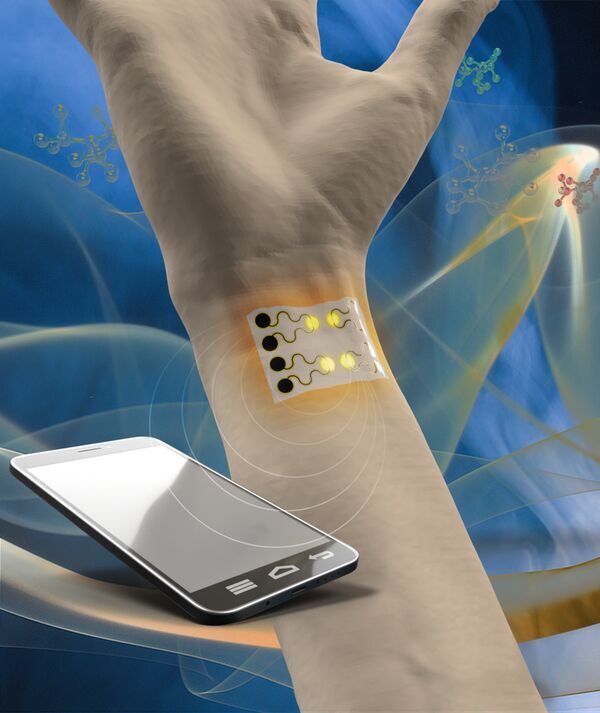
A wearable gas sensor for health and environmental monitoring
"A highly sensitive, wearable gas sensor for environmental and human health monitoring may soon become commercially available, according to researchers at Penn State and Northeastern University. The sensor device is an improvement on existing wearable sensors because it uses a self-heating mechanism that enhances sensitivity. It allows for quick recovery and reuse of the device. Other devises of this type require an external heater. In addition, other wearable sensors require an expensive and time-consuming lithography process under cleanroom conditions. “People like to use nanomaterials for sensing because their large surface-to-volume ratio makes them highly sensitive,” said Huanyu Cheng, assistant professor of engineering science and mechanics and materials science and engineering, Penn State." [...]
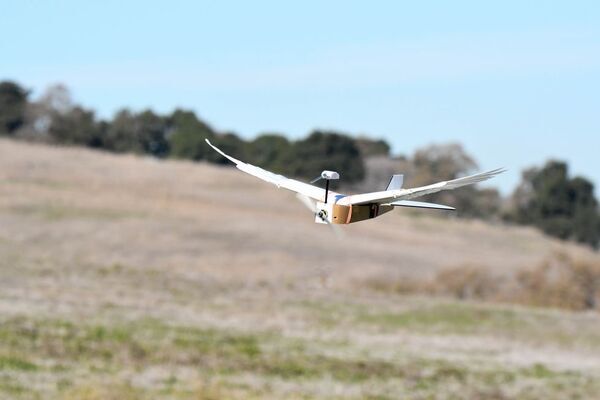
What This PigeonBot Tells Us About the Future of Flight
"For centuries, humans have been obsessed with flying. Aerospace engineers have long understood that birds can morph the shape of their wings to suit various flying patterns, such as takeoff, landing, and turning, but transforming that masterpiece of evolution into something mechanical isn't easy. But that's what scientists at Stanford University's Bio-Inspired Research & Design (BIRD) lab, and trying to do. David Lentink, a trained biologist and aerospace engineer, leads the project and says that unlocking this key ability in birds will shape the future of drone design as we know it. Lentink's team turned to the humble pigeon in order to discover these secrets of avian flight. "[They're] under-appreciated fliers," Lentink told Popular Mechanics." [...]

New research unlocks clues about Earth’s magnetic field
"Deep within Earth, swirling liquid iron generates our planet’s protective magnetic field. This magnetic field is invisible but is vital for life on Earth’s surface: it shields the planet from harmful solar wind and cosmic rays from the sun. Given the importance of the magnetic field, scientists have been trying to figure out how the field has changed throughout Earth’s history. That knowledge can provide clues to understanding the future evolution of Earth, as well as the evolution of other planets in the solar system. New research from the University of Rochester provides evidence that the magnetic field that first formed around Earth was even stronger than scientists previously believed. The research, published in the journal PNAS, will help scientists draw conclusions about the sustainability of Earth’s magnetic shield and whether or not there are other planets in the solar system with the conditions necessary to harbor life." [...]
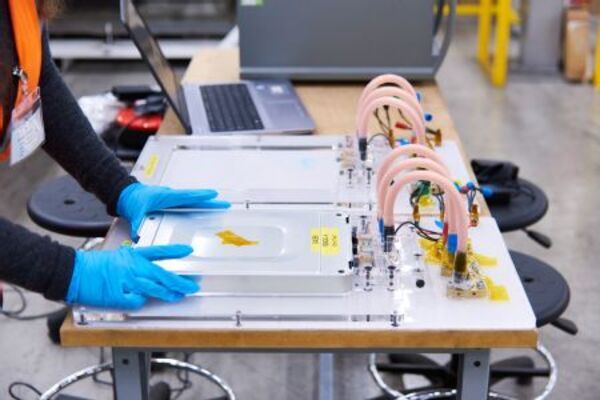
Used Nissan LEAF batteries given “second life” thanks to WMG, University of Warwick
"- When electric vehicles end their life the remaining storage capacity of the lithium battery is expected to be higher than 70%. After this, they can be reused for less demanding “second life” applications such as domestic and industrial energy storage - To make the batteries available for ‘second-life’ they need to be graded – traditionally a long and expensive process. - A new fast grading process has been developed by researchers at WMG, University of Warwick for Nissan. - Nissan trialled the process with used Nissan LEAF batteries in the UK The ability to reuse high numbers of Electric Vehicle Lithium Ion batteries for domestic and industrial use is becoming a reality for Nissan thanks to a new grading system developed by researchers at WMG, University of Warwick. Once EV batteries have fulfilled their life-span for automotive applications, they are usually recycled by the manufacturer. However many automotive Lithium-ion (Li-ion) batteries have enough life left in them after the car is scrapped for ‘second-life’ uses both domestically and industrially." [...]
Documentação
A documentação é parte essencial do processo de aprendizagem e a Internet além de artigos interessantes de explorar também tem alguma documentação em formato PDF interessante de ler. Todos os links aqui apresentados são para conteúdo disponibilizado livremente pelo editor do livro.
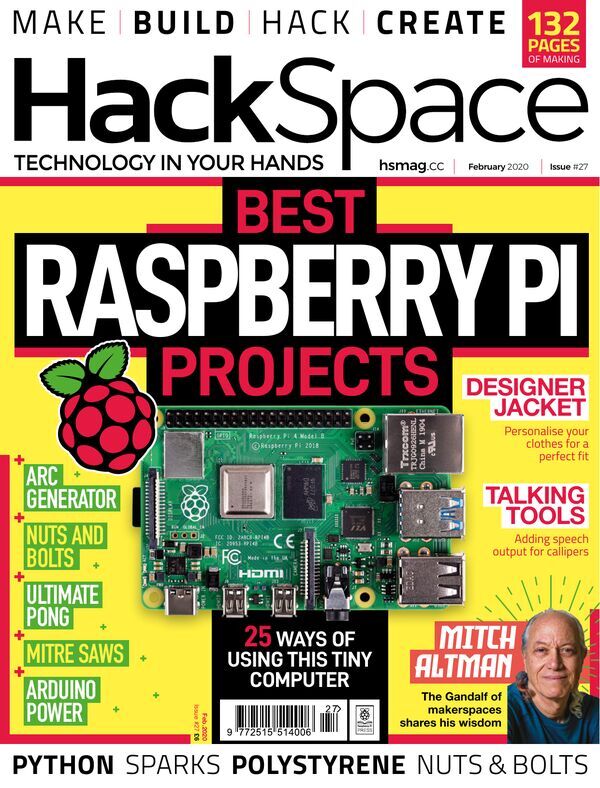
HackSpace magazine #27
"The Raspberry Pi is the world's favourite little computer. From facial recognition to underwater cameras to smart prosthetic arms, we explore the ways that makers have used the Raspberry Pi to build fantastic creations. - Sew yourself a custom hoodie - The best tiny microcontrollers - Fake Nixie tubes with jam jars and OLEDs - Get started with LoRaWAN" [...]

Think Python
"Think Python is an introduction to Python programming for beginners. It starts with basic concepts of programming, and is carefully designed to define all terms when they are first used and to develop each new concept in a logical progression. Larger pieces, like recursion and object-oriented programming are divided into a sequence of smaller steps and introduced over the course of several chapters. " [...]
Projetos Maker
Diversos Projetos interessantes.

Dual Forward/Reverse DC Motor Driver with Brake for Robots
"This high current forward-reverse DC motor driver is built using STK681-332 IC from ON Semiconductor. The circuit can drive brushed DC Motor with up to 12 A peak current. The circuit requires 3 input signals: Enable for PWM input for speed control, IN1 and IN2 to change the motor direction and to apply the brake while the motor is in running condition. Monitor (Fault) pin is used when either of the outputs short-circuits detector, overcurrent detector, or overheat detector is activated. When the detector is activated, this pin is set low and all outputs are latched off. If the output pin is short-circuited directly to VCC or connected directly to GND, an output short circuit condition is detected and the output is latched in the off state." [...]

OpenCTD
"A low-cost, open-source instrument for measuring salinity, temperature, and depth in the ocean. The ocean is not uniform, it its filled with swirling eddies, temperature boundaries, layers of high and low salinity, changing densities, and other physical characteristics invisible to surface observers. By measuring salinity, temperature, and depth, scientists can unlock ocean patterns hidden beneath the sea's surface. To reveal these patterns, oceanographers use a CTD—an instrument that measures Conductivity (which serves as a proxy for salinity), Temperature, and absolute pressure (used to determine water Depth). CTDs come in a variety of shapes, sizes, and applications. Most oceanographic vessels have a CTD connected to a rosette system, which can house other instruments and collect physical water samples in parallel with real-time data collection." [...]
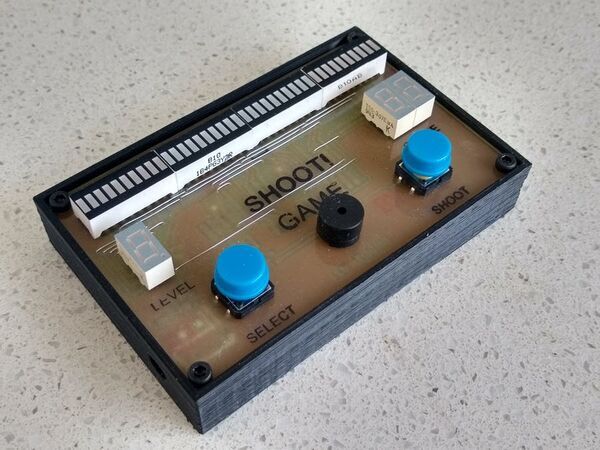
Skeet Shooting Game
"An electronic skeet shooting game with 9 levels of play. It includes features such as score and shot count. This electronic skeet shoot game was inspired by a similar version by masonhorder. LED bar graph displays are used instead of individual LEDs. By using two 10 Segment Red, Yellow, Green, Blue LED Bar Graph displays along with two Blue LED bar graph displays, it gives a total of 40 LEDs in a relatively small space. There are four red bars in the center to represent the "target" area." [...]
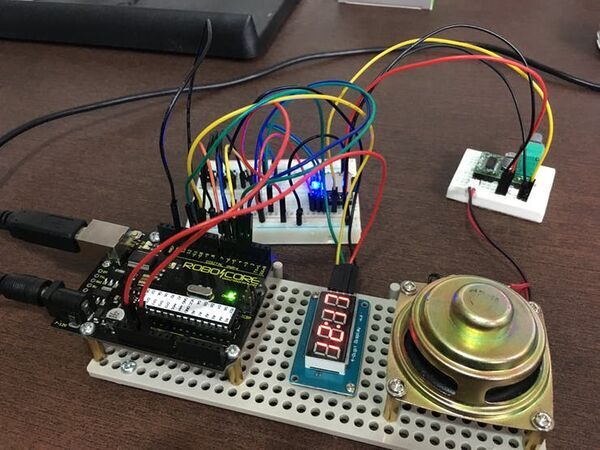
Talking Clock 2 - New Version (Bilingual: EN-PT)
"This digital clock speaks the time in two languages (English or Portuguese). The Talking Clock 2 (Bilingual) is the new version of Talking Clock I have published some time ago. The code was updated to support two languages (English/Portuguese) and new features were introduced into the code: Mode 1: Set the time (hour & minute) Mode 2: The clock talks every minute Mode 3: The clock talks every hour Mode 4: The clock speaks the time when a button is pressed Mode 5: Set the language for English or Portuguese Note: The language status is stored in Arduino - EEPROM to keep this information even when it is restarted or turned on. It was introduced as optional a mini amplifier PAM8403 (3W + 3W) for better control of the sound level in the speaker. I am using only one speaker (one sound channel), but you can add another if you want. " [...]

Don't Worry Bee Happy
"Retrieves air moisture, temperature, detects the presence of the queen bee, and also gives the weight of the bee hive. As part of our studies at Polytech Sorbonne, Sorbonne Université (ex Polytech Paris UPMC, Université Pierre-et-Marie-Curie), our teacher gave us a project which consists in retrieving air moisture, temperature, detecting the presence of the queen bee and gives the weight of the bee hive. The goal is to monitor on site and online the hive’s environment. Temperature / humidity acquisition The temperature of a hive and its humidity says a lot about its condition. It is possible to know if the bees are still active or if the temperature inside the hive is insufficient for the survival of the bees. To collect this information, we use a DHT22 sensor which captures both the temperature and humidity of the air." [...]
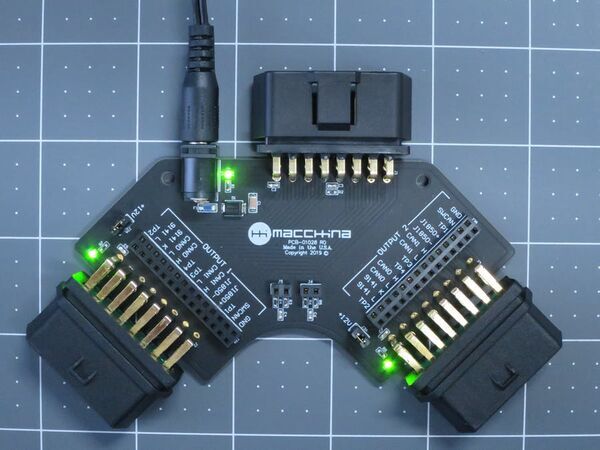
Using an OBD2 Breakout to Sniff, Re-route, and More
"A 3-way OBD2 breakout board that allows you to monitor and route signals anywhere you want using simple jumper blocks and wires. The OBD2 test board is designed to simplify OBD2 device development. INPUT OBD2 Connector: 1 input OBD2 connector (MALE pins). This connector would plug into an OBD2 extension cable and eventually into a car's OBD2 port. OUTPUT OBD2 Connectors: 2 output connectors. (FEMALE pins)." [...]

DetectBot
"Take a stroll or set it on a candy hunt! This little bugger loves candy.. So he tries to run them over! The DetectBot is programmed using the pre-made Nvidia JetPack 4.3 from the Nvidia Jetson ''Hello world'' there are just a few more installations needed to be done to get it up and running. Due to the lack of time the hardware setup and program code is as of now just made to work it will be updated in the future. The CandyNet detect program is only trained on about 100 images and whit a black surface, I decided to use 50x50 to 400x400 bounding boxes so the bot is unable to detect candy more than about 30cm from the camera, this can be remedied/improved with settings when creating a new detection model." [...]

MQTT Communication With the Nano 33 IoT & WeMos D1 Boards
"This post will tell you everything you need to know about MQTT communication which will enable you to use it communicate between devices. This post will tell you everything you need to know about MQTT communication which will enable you to use it communicate between devices. We add an LED to the Arduino Nano 33 IoT board and this LED is controlled remotely from a switch that is connected to a WeMos D1 mini board. All communication occurs through the MQTT broker which also communicates with Home Assistant. A lot of effort has been put into making the video above as we felt that a video is the best way to understand a topic like this. Please take a moment to watch the video to get a better understanding of MQTT and how we will set up the broker, use it and so on." [...]
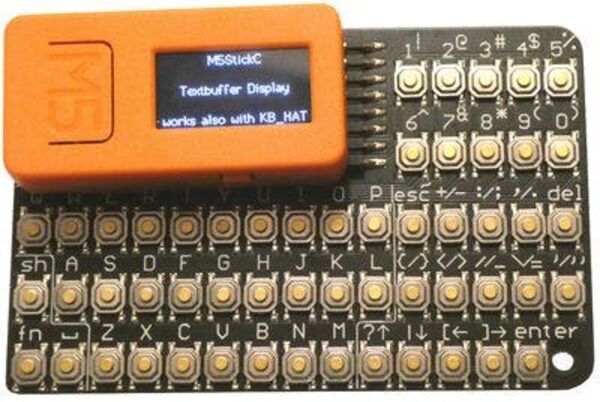
M5StickC Textbuffer Scrolling Display
"A library to display texts on the M5StickC in any orientation. The display scrolls and wraps text lines automatically. The M5StickC is an ideal development tool for various projects. The ESP32 enables almost universal application possibilities and with the 160x80 RGB pixel display the M5StickC can also be used for graphically complex applications. But sometimes only a simple text output is needed. Similar to a terminal, where the text scrolls up with every new line." [...]

e-Paper Bus Timetable
"An ESP32-based ePaper Bus Timetable to keep track your daily routes and to be always on time. The purpose of this project is to make a simple smart device that can really improve your mornings and relieve your stress. I developed this solution for my girlfriend who uses the public transportation daily and struggles with keeping timetables in memory, route planning and being in time.This simple device would help anyone who uses public transportation by checking the ETAs of their most used bus lines and keep the user updated.To reduce the maintenance as little as possible, the device is powered by a Li-ion battery and wakes up every 10 minutes to update its table, which is displayed on a e-paper display, reducing the power consumption next to nothing. Hardware wiring and low-power tricks By using the TTGO T5 esp32 epaper module, there is no much to wire since it is all built-in. Make it sure to buy the Li-ion battery with the right connector so it will be just plug-and-play.There is a little trick you should do to reduce the power consumption of the board. When you plug the power in and turn on the power switch, you'll see there is a green led near the antenna showing up; this led is directly connected to 3.3v rail so it will be always on and will always consume some energy." [...]
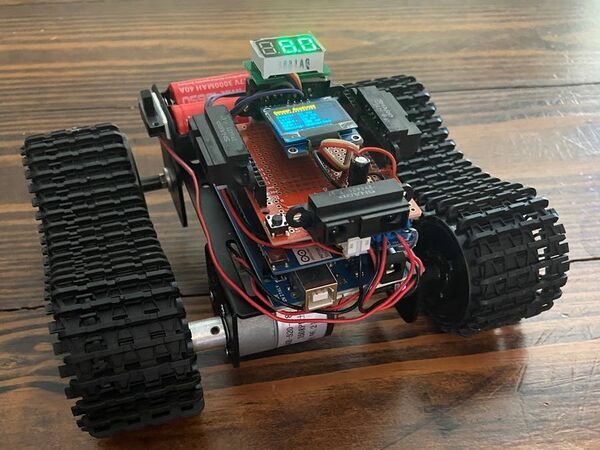
Autonomous Arduino Mega Track Robot
"This robot uses 4 Sharp IR sensors to wander around the house and avoid running into things. I was looking for a fun weekend project with parts I had around the house. In digging through my junk box, I found a track chassis I bought a while back on Amazon just because it looked cool. I figured I'd use it one day. Apparently, this was the day! I thought an autonomous robot would be fun to build." [...]

FPGA-Fractals 1920x1080x60 Real-Time on USB Power
"FPGA-based real-time fractal generation. Fully pipelined, dynamic resource allocation, up to 18000 MMUL/s. Float matrix math on J1B CPU. Fractal generation is a popular FPGA design exercise. For example, Stanford university used it as lab assignment already in 2002. It must have been around that time that I saw a similar demo on some trade fair, and had the itch to try my hands on it ever since." [...]
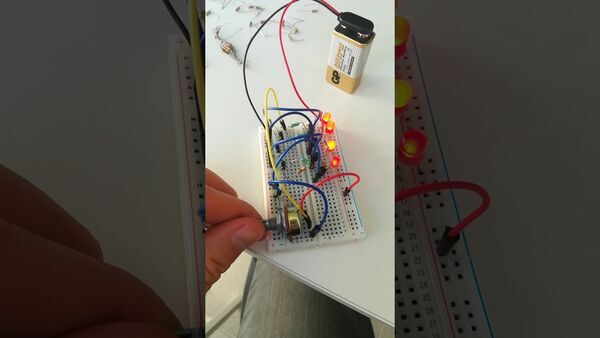
Simple VU-Meter Circuit
"I put together this Voltage Unit (VU) meter using LEDs on a breadboard the other day. It only has 4 LEDs, but can easily be expanded to more It’s basically a simple display for showing a value. It’s originally for showing signal level in audio circuits, but there’s no reason you can’t use it to show temperature, rain intensity, light level, or whatever other value you are measuring. In the video above, I added a potentiometer as a voltage divider between 9V and 0V, so that the output would be somewhere in between. This way I could easily test the VU meter. If you want it to show audio level or any other signal with very low voltage, replace the potentiometer with an amplifier." [...]
NeoPixel Infinity Mirror Coaster
"In this guide we’re building yet another infinity mirror! This makes a really cool optical illusion that uses acrylic mirrors and a strip of NeoPixel smart RGB LEDs. Bluetooth Remote Control With the ItsyBitsy nRF52840, you can remotely control the LEDs. Set different colors and change animations with the Bluefruit connect app for iOS or Android. 3D Printed Snap Fit The 3D printed parts are designed to snap fit together so it’s easy to build. It's portable with a rechargeable battery and switch so you can easily turn it off." [...]
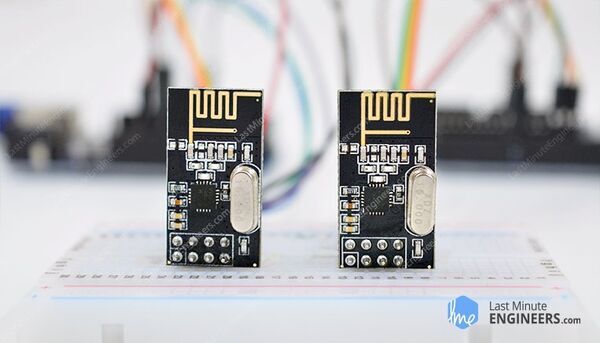
How nRF24L01+ Wireless Module Works & Interface with Arduino
"Having two or more Arduino boards be able to communicate with each other wirelessly over a distance opens lots of possibilities like remotely monitoring sensor data, controlling robots, home automation and the list goes on. And when it comes down to having inexpensive yet reliable 2-way RF solutions, no one does a better job than nRF24L01+ transceiver module from Nordic Semiconductor. nRF24L01+ (plus) transceiver module can often be obtained online for less than two dollars, making it one of the most inexpensive data communication options that you can get. And best of all, these modules are super tiny, allowing you to incorporate a wireless interface into almost any project. Hardware Overview Radio Frequency The nRF24L01+ transceiver module is designed to operate in 2.4 GHz worldwide ISM frequency band and uses GFSK modulation for data transmission. The data transfer rate can be one of 250kbps, 1Mbps and 2Mbps." [...]
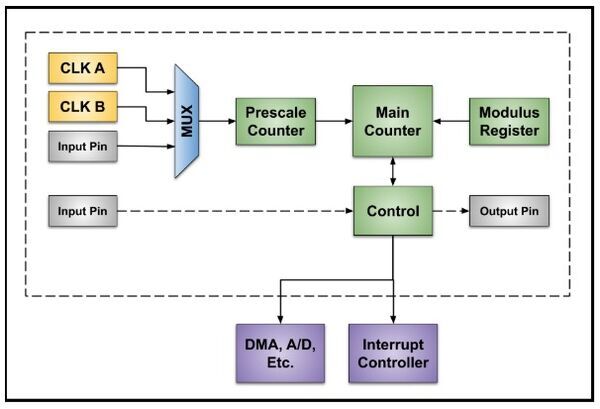
Introduction to Microcontroller Timers: Periodic Timers
"This article, the first in a series on “timer/counter” functions in microcontrollers, discusses periodic timers. This article is the first in a series on “timer/counter” functions in microcontrollers. The focus is not on a particular family of microcontrollers but describes timer functions in general. I start with looking at features in common with most types of timers. Then, I go into the periodic timer and how it can be used. I describe the SysTick timer in detail as an example." [...]

Auto Domino
"Struggling to place neat rows of dominos, check this cool thing, a robot that lays Dominos and also controlled by Alexa. Introduction Voice commands is the future and integrating voice into all smart devices is need of the day. We have noticed our son watching videos of domino's tumbling to reveal amazing patterns but as a small kid not having patience and dexterity to lay domino's in neat rows. So we decide to build a robot that can perform this task. Our project aims to simplify the task of laying domino's. We have a created a robot that harnesses the power of AI via Voice User Interface - VUI of Alexa and a popular Robotics platform ie LEGO Mind storms to build a Domino laying robot that installs Domino's in neat lines." [...]
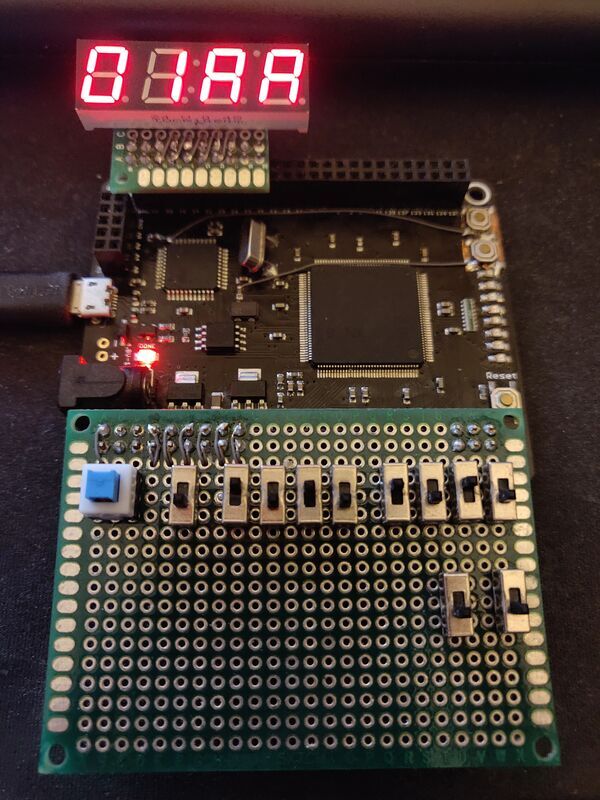
FPGA Cosmac ELF
"A re-creation of a Cosmic ELF computer, Coded in SpinalHDL This is a re-creation of a Cosmac ELF computer, Coded in SpinalHDL. The goal of this project is to end up with a cycle-accurate 1802 processor that can be used in FPGA designs easily. When I start the project I was new to SpinalHDL but I had attempted in the past to write the same processor in VHDL. However, language complexity and the sheer amount of code and time needed to write and debug that project ended the work on it. To make verification of the CPU easier, I made the simulation capable of reading the Emma debug trace log format. The theory is that the CPU should follow that same path as the debug log from Emma." [...]
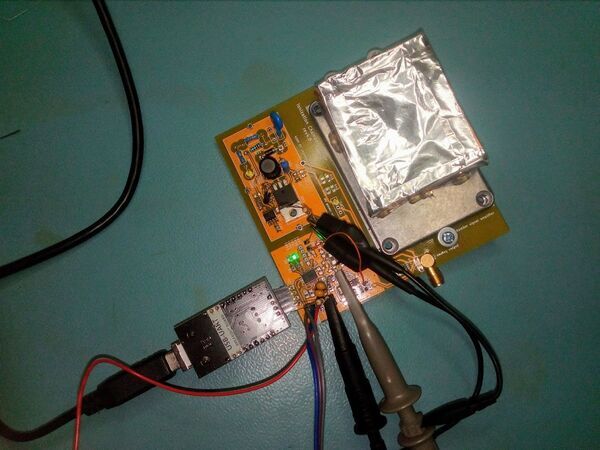
Ionization Chamber
"Ionization chamber is a device to measure radioactivity level. When air's atoms are hit by radioactive particles, an ion-pair is produced. Ions has electric charge, if they are in electric field create by positive and negative electrodes, negative ions will move to positive electrode and positive will move to negative electrode. They will try to "meet each other" thus creating a current. This current can be measured. The current is proportional to amount of ion-pairs." [...]

Battleship. Interactive game using Amazon Alexa and LEGO EV3
"You can play the classic Battleship game together with Alexa. The objective of the game is to destroy all ships of the opponent. This document will describe all aspects of the project, including technical descriptions of the internal game process and robot mechanics. Before reading further, I recommend you watch the following video, as it will help you get a better understanding of the concepts that will be discussed here. The game is composed of two boards: The upper board will be called Alexa Board, and will be used to manage the status of all attacks and hits executed by the player. The bottom board will be called Player Board, and will be used to position the player’s ships." [...]
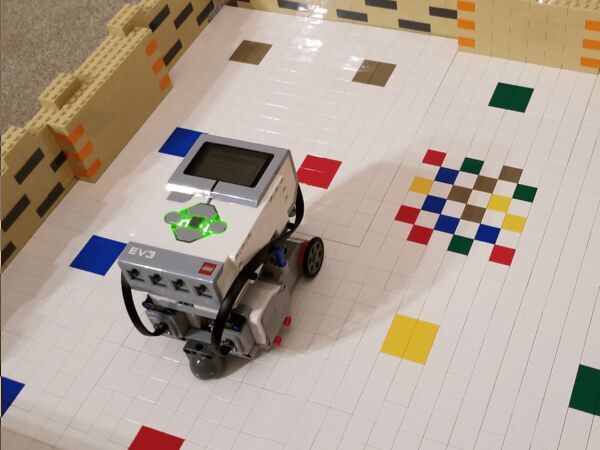
DWR - An Alexa voice enabled maze-solving LEGO robot
"Use your voice to guide DWR through a re-configurable Lego maze to learn complex, multi-step instructions and spatial orientation concepts. We wanted to create DWR to teach our kids the basic building blocks of programming and multi-step instructions without the need to teach them how to code just yet. Inspired by concepts from First Lego League, board games such as Robot Turtles, and a love of making mazes and labyrinths, I set out to create a robot that you control with your voice and give instructions on how to solve a maze. By playing this game, the kids learn the basics of direction, how to add multiple instructions together to solve a problem, and how to visualize the robots position after certain moves. " [...]

Easy IOT - Low Power Wireless Temperature Sensors
"In this tutorial we will build an ultra-low power temperature node to work with our ESP32 Hub system. We will be using two of the most popular temperature sensors, the DS18B20 and the DHT22 Temperature and Humidity sensor. The node is based on a modified Arduino Pro Mini 3.3V (Clone) and is powered by a single rechargeable 18650 Lithium Ion Battery. The node works by periodically transmitting the temperature back to the hub, then going into a deep sleep for a period of time. Depending on how regularly the sensor transmits, the battery has the potential of lasting over a year on a single charge. As the Arduino Pro Mini does not have a USB connector on it, we will also need an FTDI Serial Programmer." [...]

Battle of the Bands: 555 Timer Edition
"Today, we are going to be using 555 timers to create some musical instruments! We will be building a theremin, organ, and an Atari Punk Console. I used this activity in my classroom to celebrate graduating from discrete components to integrated circuits. This activity made a great segway into the rest of the course after covering the fundamentals of resistor-capacitor (RC) circuits and semiconductors. I had never seen students so frantically solving algebraic equations to compute the perfect capacitance values to tune their instruments to the correct frequencies before the performances. This activity is a lot of fun and teaches many aspects of circuit design." [...]

RFID Smart Door Lock With ESP8266
"In this video I am going to show you how to build your own access control system with RFID and Arduino + Cloud logging of attendance. It is a very good project for IoT beginners and enthusiasts, hope you like it. Supplies: 1x RGB LED. 1x RFID Reader 1x NodeMCU v3 1x SIL Connector 1x LCD I2C 1x Female-female connector 1x 7805 Voltage Regulator 1x 2n2222 npn" [...]

Guardian Shield From Legend of Zelda Breath of the Wild
"One cool thing about Legend of Zelda Breath of the Wild is how some of the gear glows. The Guardian Shield is one of those item. When I saw it in the game I knew I needed to make. This will also fit perfectly with my Breath of the Wild cosplay I plan to make this year. Supplies: pattern 10mm, 8mm, and 2mm EVA Foam 6mm Plastazote LD45 Contact Cement utility knife knife sharpener superglue Hot glue 123 blocks velcro Adafruits Gemma MO 5V output Powerbank alligator clips for testing Neopixels Strip hook up wire soldier and soldiering iron Helping Hands parchment paper" [...]
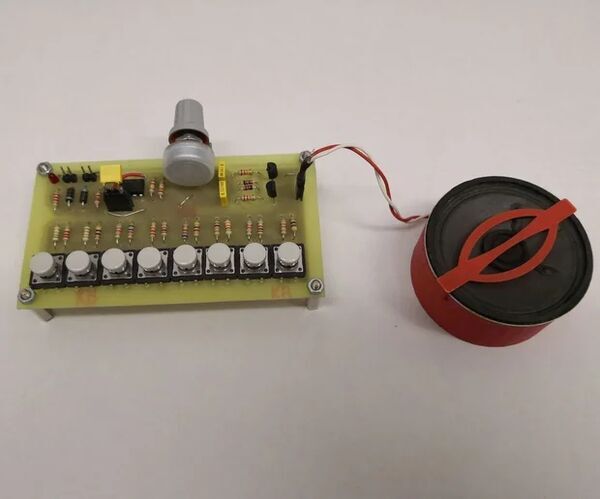
Awesome Analog Synthesizer Using Only Discrete Components
"Analog synthesizers are very cool, but also quite difficult to make. So I wanted to make one as simple as it can get, so its functioning can be easily understandable. For it to work, you need a few basic sub-circuits: A simple oscillator with resistor selectable oscillating frequency, some keys, and a basic amplifier circuit. If you use some conductive pads instead of push buttons for the keys, you could make your version of the very cool Stylophone! In this instructable we will learn how to make it and we will learn how it works. The instructable is meant for beginner to intermediate electronics enthusiasts." [...]
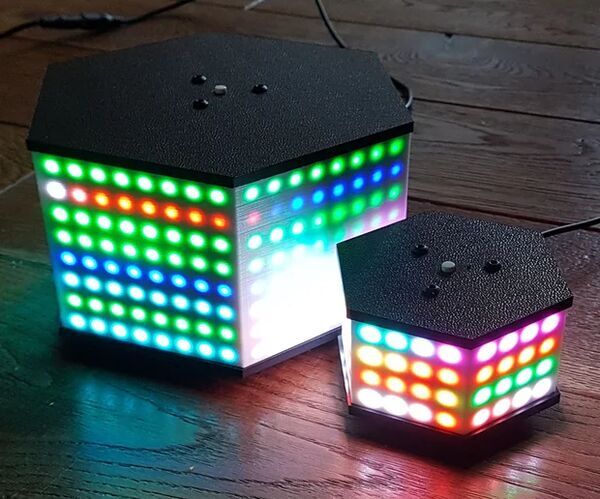
Animated Mood Light & Night Light
"Having a fascination that borders on obsession with light I decided to create a selection of small modular PCBs that could be used to create RGB light displays of any size. Having made the modular PCB I stumbled on the idea of arranging them into a hexagon to create a 3D display that could be used to create anything from a simple bedroom night light to a mood light that would not be too out of place sat on a table in a high end restaurant. Of course other shapes could also be created using the same principals. Here are some of the animations currently running on the light. Fire Rain Snake (Retro) Game Of Life Waveform Oscillations Lighthouse Spinning Patterns (Barber Shop)The light is currently created in two sizes - Small (96 LEDs) and Large (384 LEDs) but this can be scaled up as required. Supplies: WS2812B LEDs - AliExpress PCBs - ALLPCB 3mm Black Laser Cut Plastic - Plastic Sheet Supplier White 3D Print Filament - Amazon Electronic Components - Farnell / Newark M3 Bolts and Threaded Spacers - Amazon Soldering Iron Toaster Oven - Surface mount component assembly" [...]
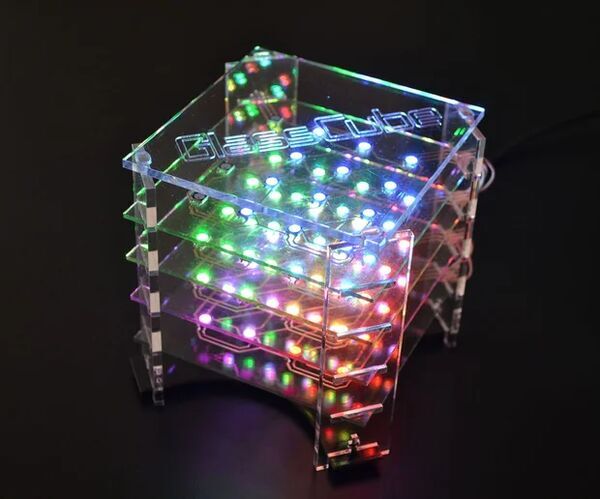
GlassCube - 4x4x4 LED Cube on Glass PCBs
"My first ever instructable on this website was a 4x4x4 LED Cube using glass PCBs. Normally, I do not like to do the same project twice but recently I came across this video of french maker Heliox which inspired me to make a bigger version of my original cube. In her video Heliox comes up with a much simpler process to manufacture glass PCBs that does not involve etching but instead she uses a plotter to cut the traces from a self-adhesive copper foil which is then transferred to a glass substrate. Since plotters are not that expensive and could also come in handy for other projects I just got one to try the process for myself. Apart from being a bigger version of my original cube this version also uses a custom PCB based on a SAMD21 microcontroller and a housing made from lasercut acrylic. The cube can be programmed with the Arduino IDE and is also compatible with CircuitPython." [...]

DIY Magnetic Drill Press
"The whole idea is based on our latest conversion of drill press by using a brushless motor from an old hoverboard and that went great So we decided to built a magnetic drill press and as the name say, it will be able to stick to any ferous metal surface and drill a hole perpendicular to the surface. Now we are going to use a Hoverboard motor as its an outrunner brushless motor and has got alot of torque. The whole unit is going to be a cordless unit and strudy enough to drill holes through thick metal sheets. So time to dismental our beloved hoverboard first..." [...]
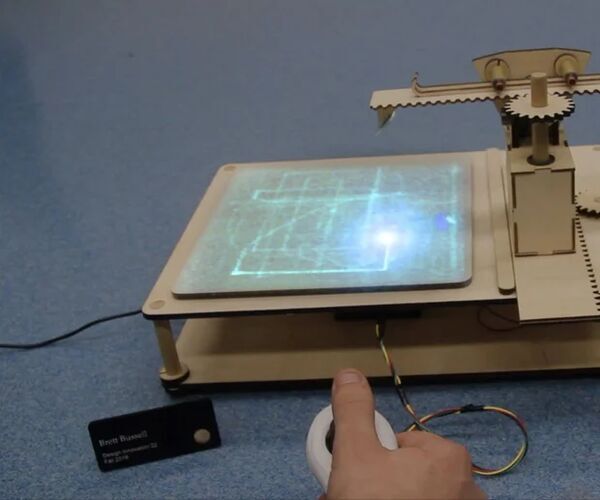
Laser Drawing Machine
"Draw phosphorescent light trails with a machine designed and built completely from scratch! The story: In between studying breaks during midterm week, my friend Brett and I designed and built this machine that utilizes a laser and mirror system to draw luminescent light trails, controllable via a 3D printed joystick. The main goal was to use drawing techniques and materials people wouldn’t typically associate with drawing while instilling a sense of intrigue in the user. We hope you enjoy it as much as we had fun designing and building it! Supplies: We’re two broke students so we largely turned to finding scrap pieces and discarded wood around our school and all tools were from our school's makerspace. We also didn't have access to many metal materials (gears, rack and pinion, dowel, etc.)" [...]
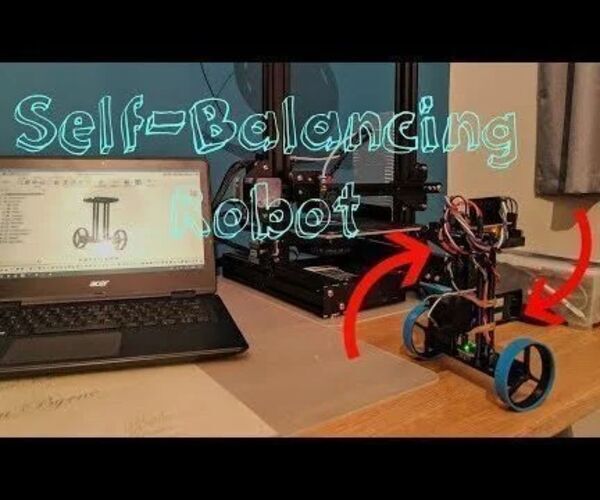
Self Balancing Robot - PID Control Algorithm
"I undertook this project because I wanted to learn more about Control Algorithms and how to effectively implement a PID control loop. The project is still in the development phase as a bluetooth module is yet to be added which will allow for the control of the robot from a bluetooth enabled smartphone. Since the motors used are relatively cheap, they have a considerable amount of play i them leading to jerky motion as the motors overcome the 'slack' before applying torque to the wheels. The code I have written is reasonably simple but effectively demonstrates the capabilities of the PID algorithm. Project Summary: The chassis of the robot is 3D printed using an Ender 3 printer and is designed to press fit together. The robot is controlled by an Arduino Uno which takes sensor data from the MPU6050 and controls the DC motors through an external motor driver." [...]
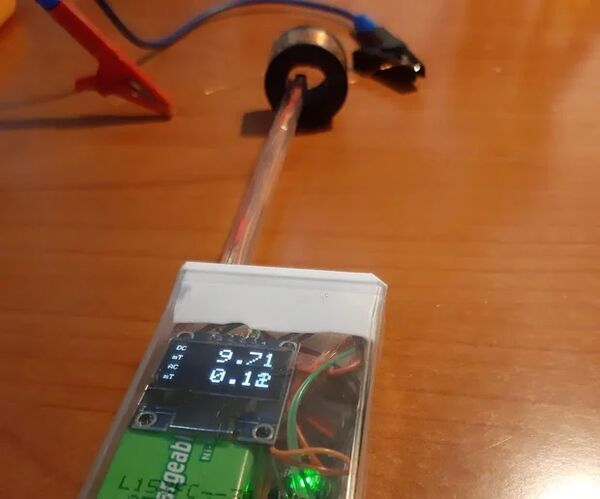
Portable Magnetometer
"A magnetometer, sometimes also called Gaussmeter, measures the strength of the magnetic field. It is an essential tool to test the strength of permanent magnets and electromagnets and to understand the field shape of nontrivial magnet configurations. If it is sensitive enough it can also detect if iron objects got magnetized. Time-varying fields from motors and transformers can be detected if the probe is fast enough. Mobile phones usually contain a 3-axis magnetometer but they have been optimized for the weak earth magnetic field of ~1 Gauss = 0.1 mT and saturate at fields of a few mT. The location of the sensor on the phone is not obvious, and it is not possible to place the sensor inside narrow apertures such as the bore of an electromagnet." [...]
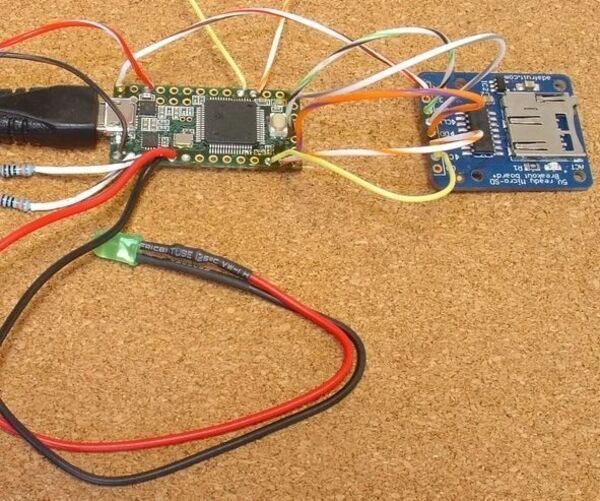
Log High Speed ECG or Other Data, Continuously for Over a Month
"This project was developed to support a university medical research team, who needed a wearable that could log 2 x ECG signals at 1000 samples/sec each (2K samples/sec total) continuously for 30 days, in order to detect arrhythmias. The project presented here includes remote control and monitoring of the logging. Remote control is via menus presented on a serial terminal, either on a computer or mobile phone. This project does not cover the ECG measurement or packaging or battery required for the final wearable. This high speed/long duration version uses Teensy 3.2, Adafruit Micro-SD breakout module, a quality 16G SDHC class 10 SD card to log the data and a Bluetooth communications module for control and monitoring. A less developed and slower UNO/Mega2560 version of this project is also available." [...]

Play Racing Sims with Your Car
"On one fated late August day, my Subaru BRZ came to a surprising halt in the keyhole at Road Atlanta. It was going to take a while to source and buy a new engine and I still wanted to get some seat time in. Why would you do this? Seat time is the best way to develop your skills as a driver. It's hard to keep your skills sharp when you're not at the racetrack. Most people turn to buying sim rigs to alleviate that." [...]
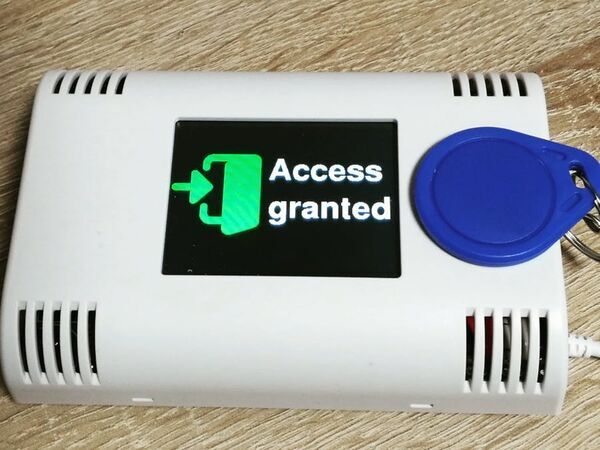
Arduino MKR RFID Reader with TFT Display
"How to design a nice looking RFID reader with TFT display and for wall mounting. It is very easy to create a nice looking RFID reader with TFT output for wall mounting with an Arduino MKR of your choice and our ArduiTouch MKR kit. You can use this reader for door access or intruder alarm terminals. It's easy to extend this simple design for more complex application and wireless data transmission. In the first step you have to connect the RFID reader pcb with the ArduiTouch pcb. In the pictures below you will find a wiring diagram and some pictures of my real solution." [...]
That's all Folks!



